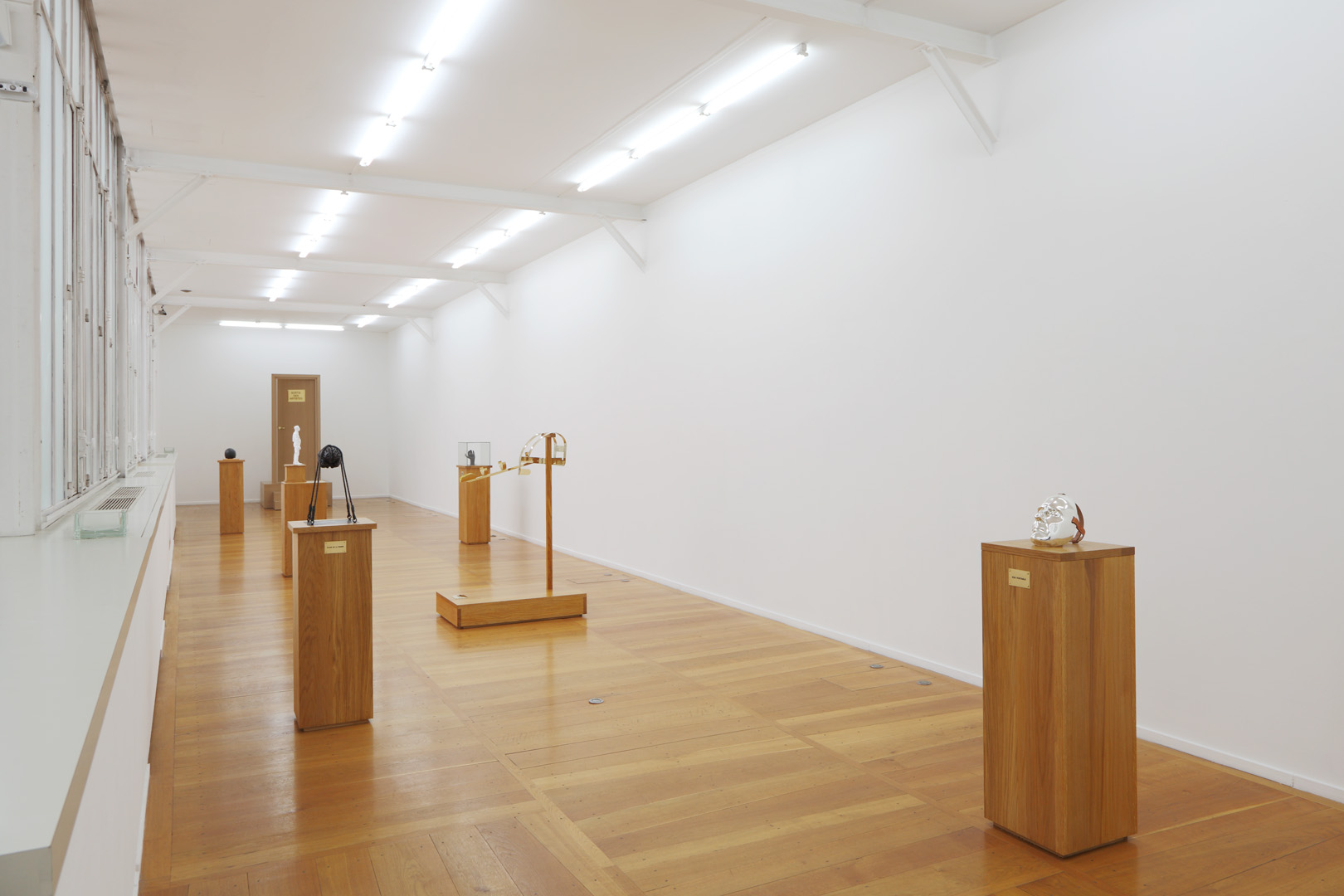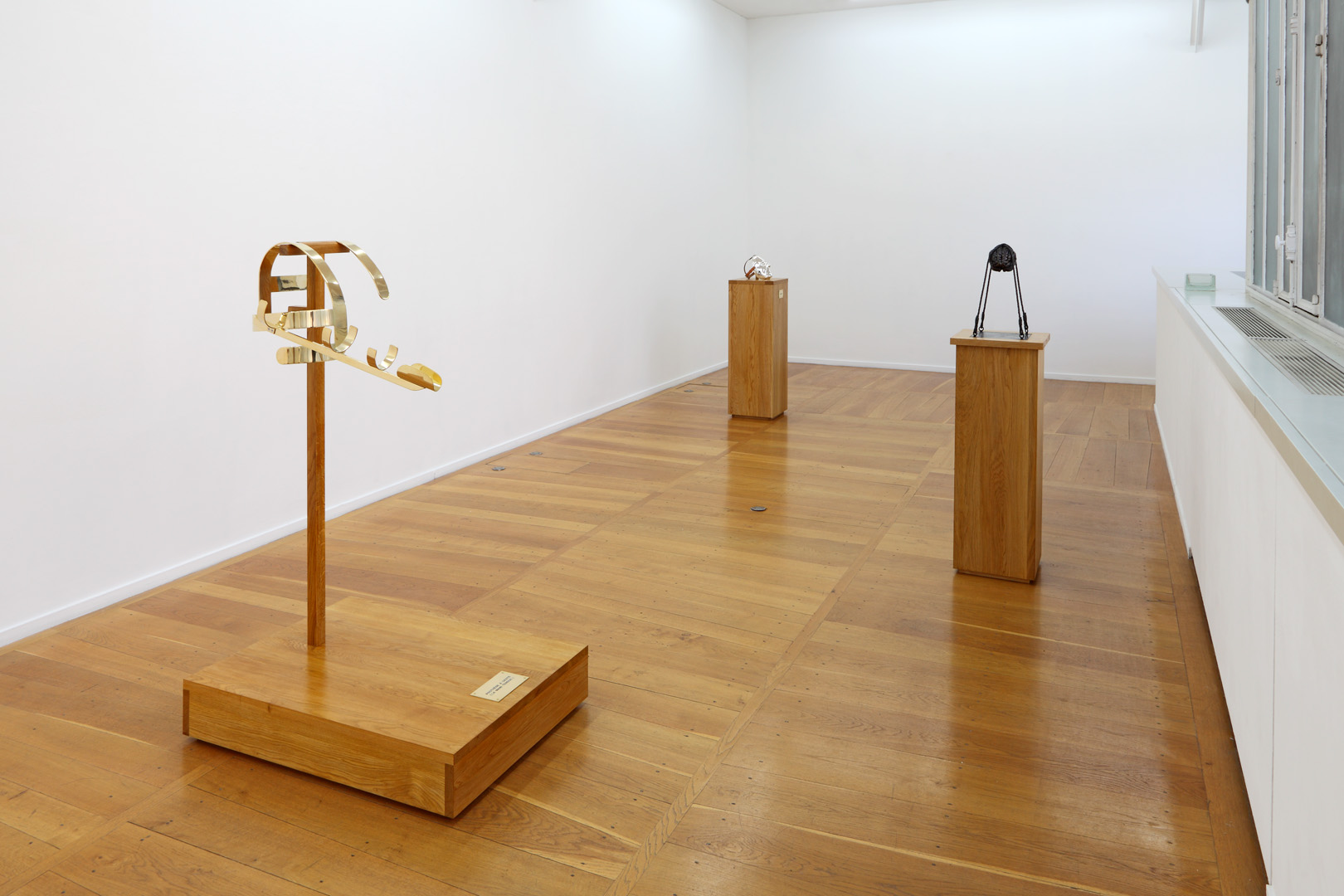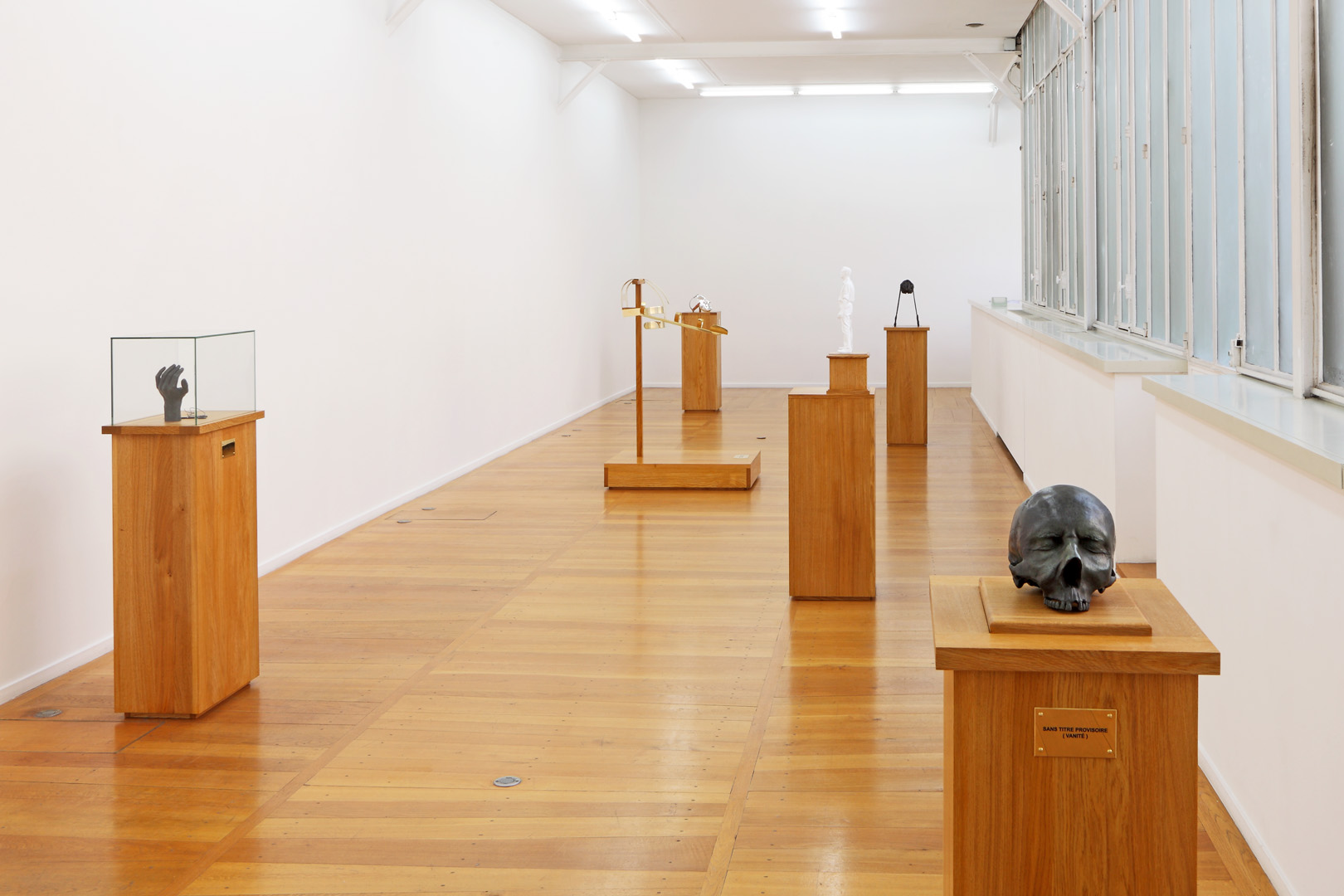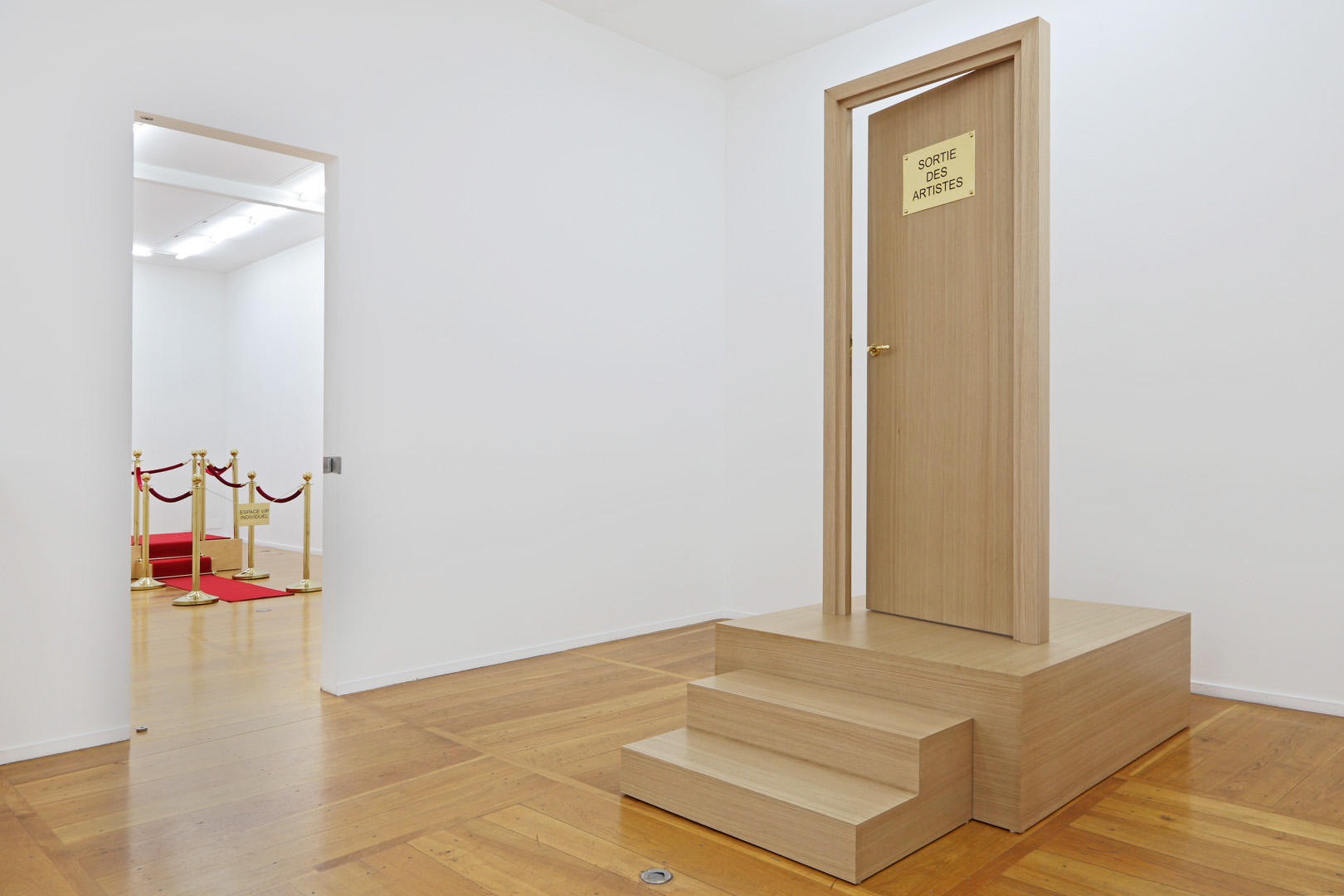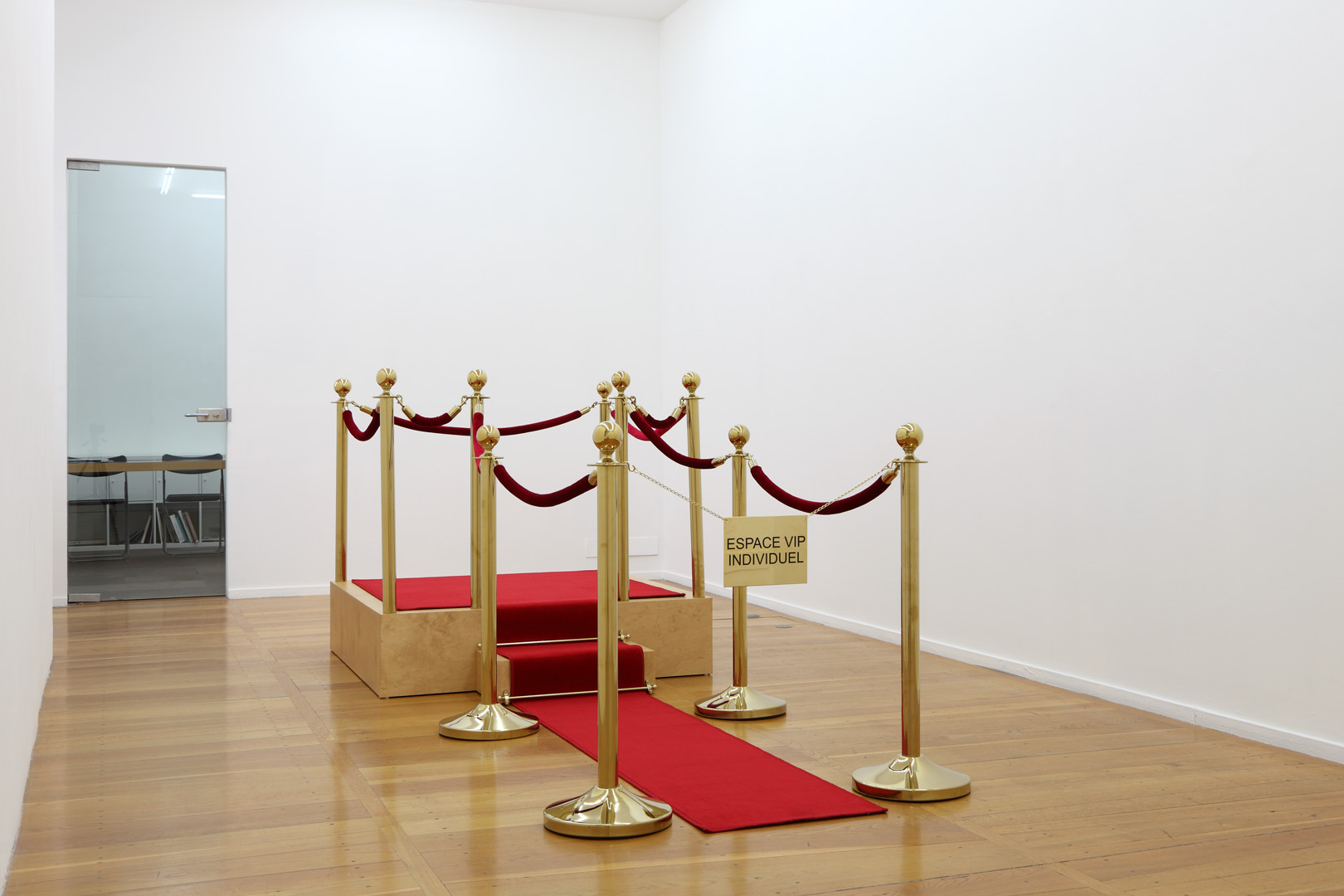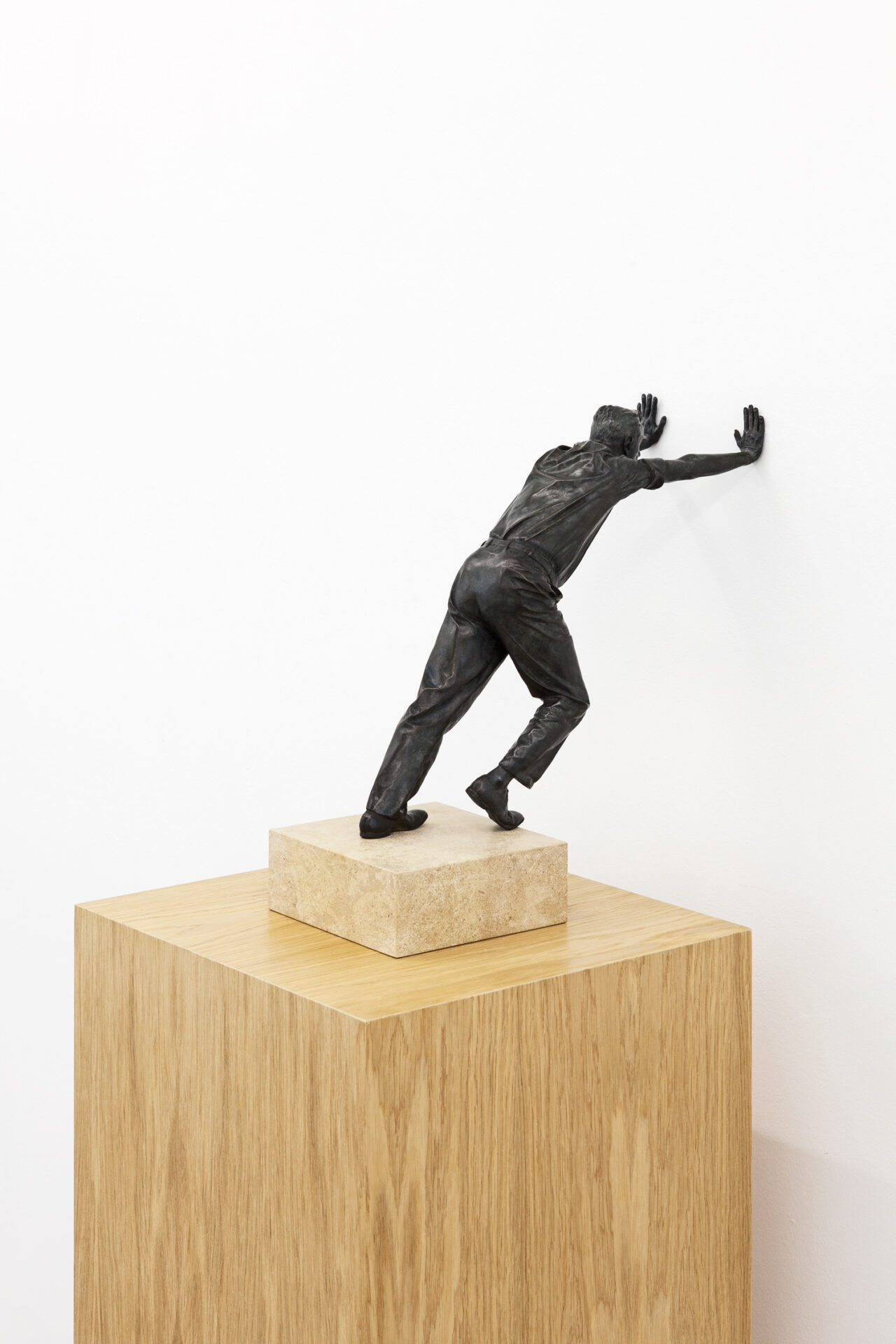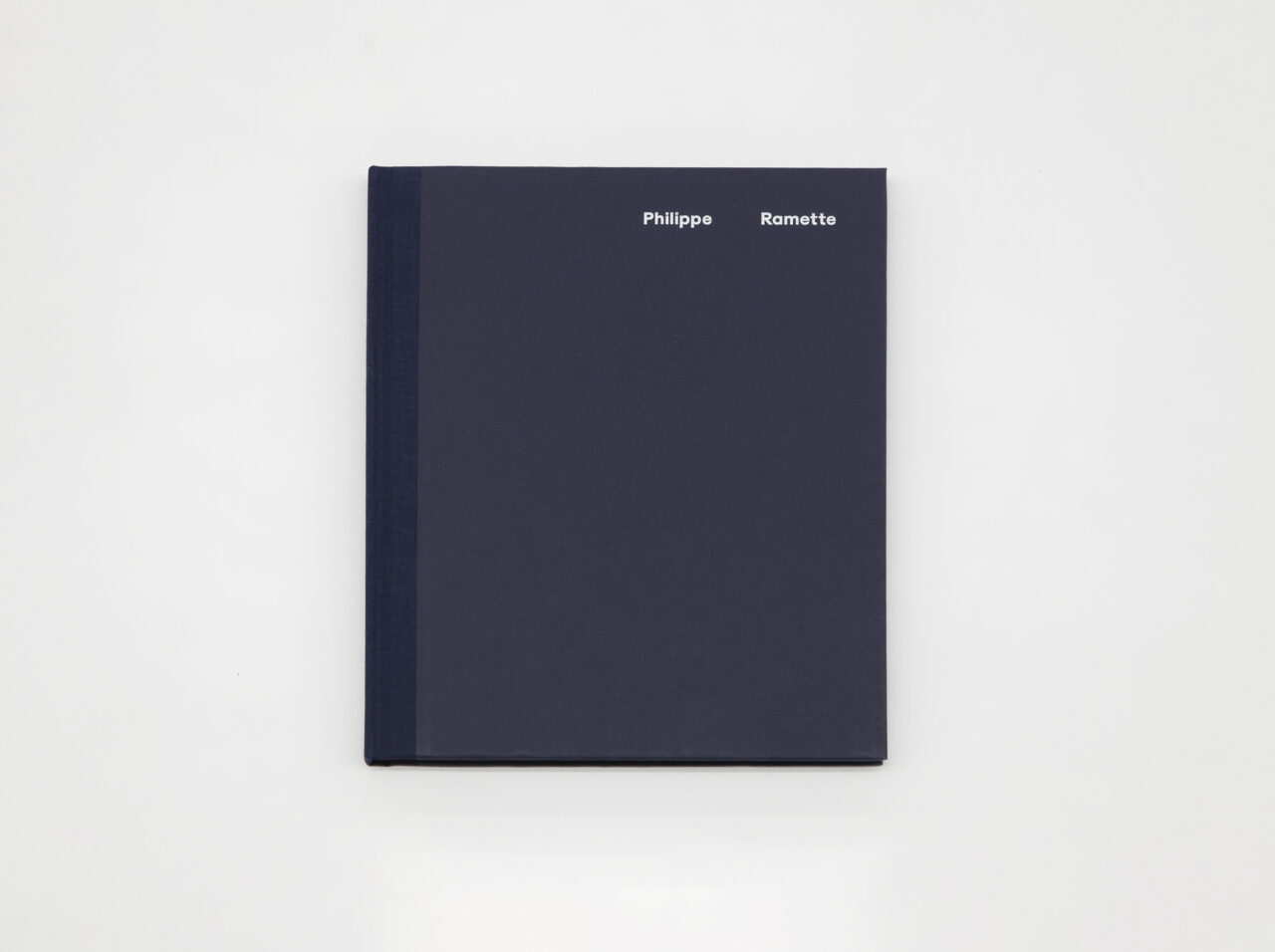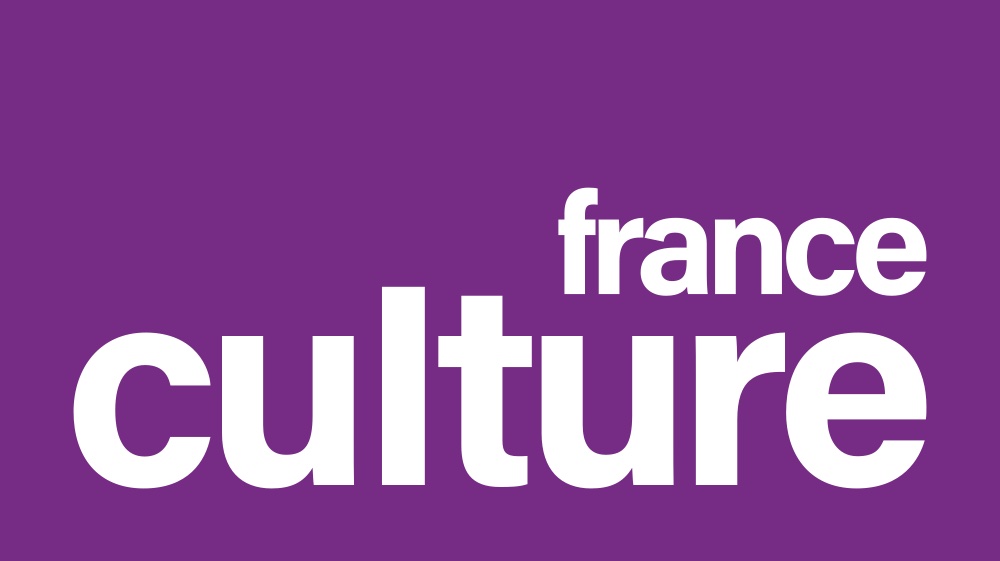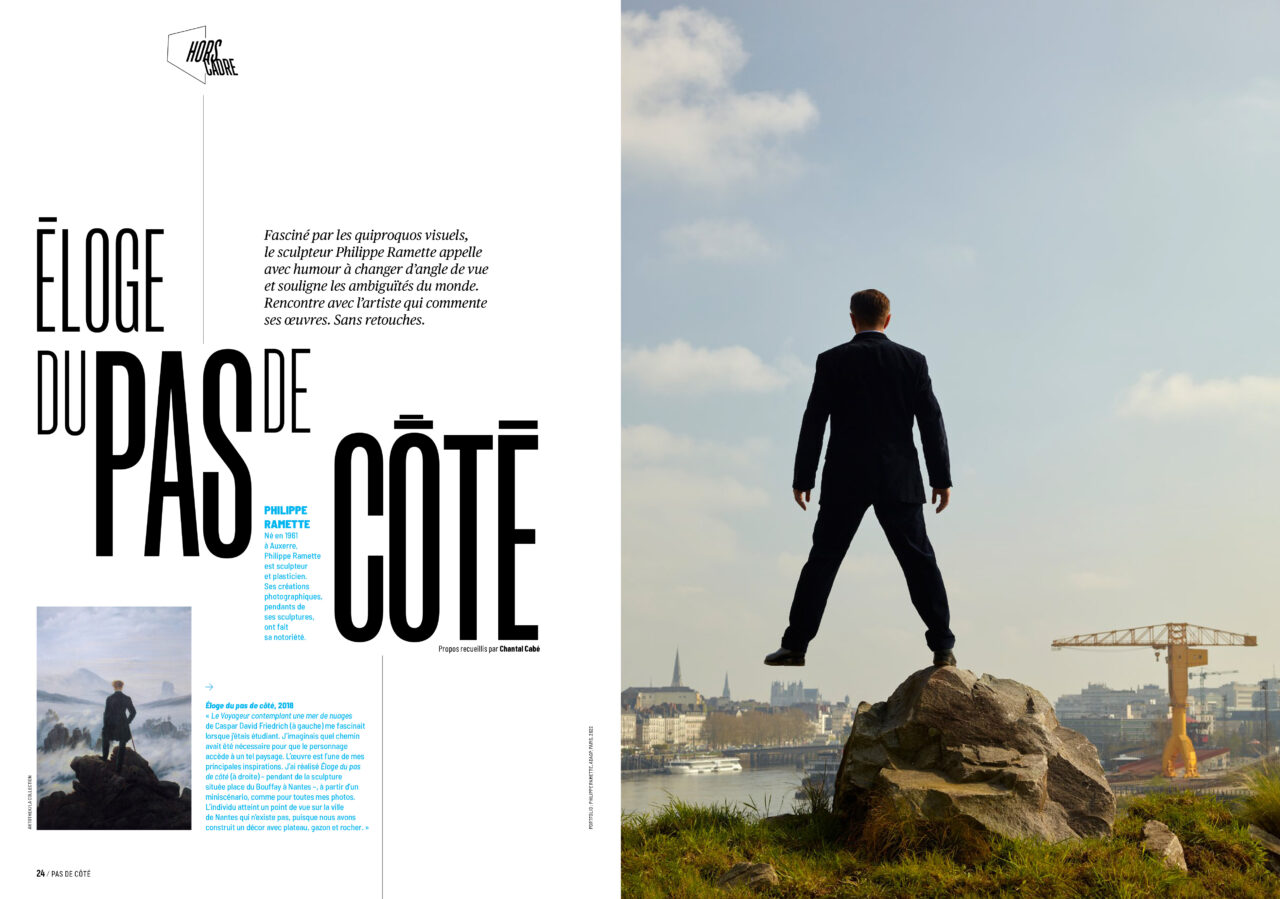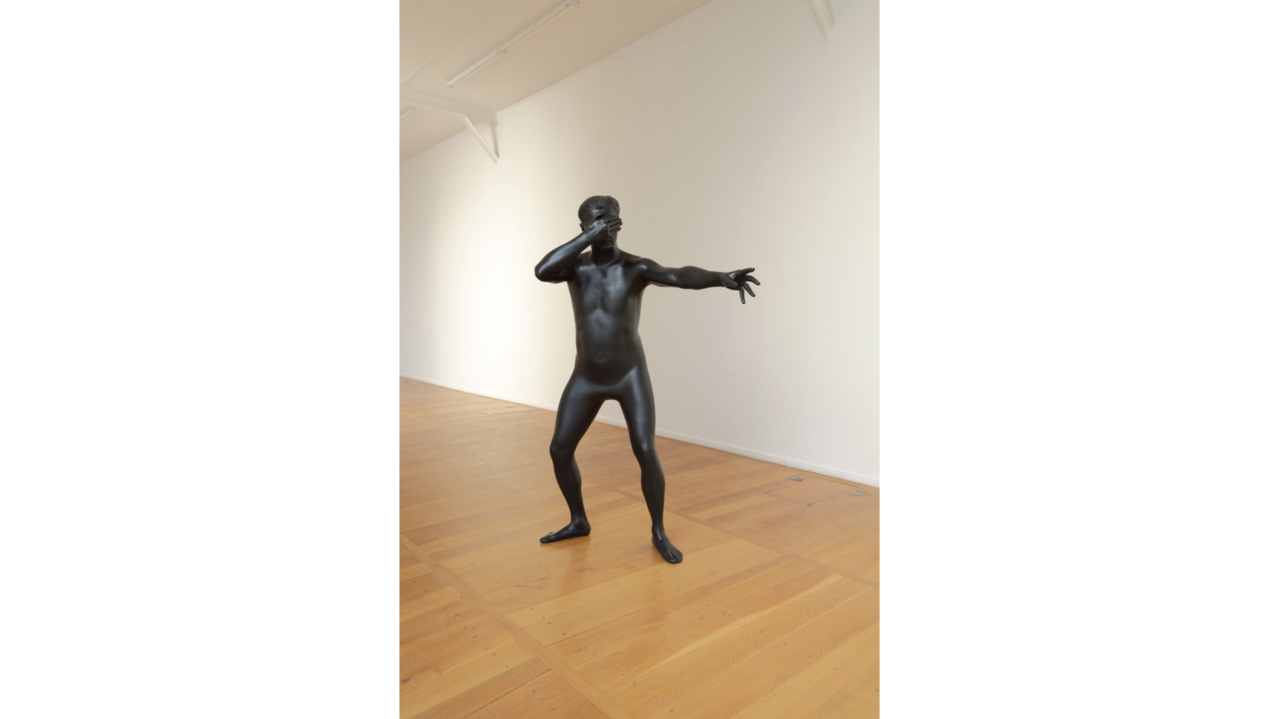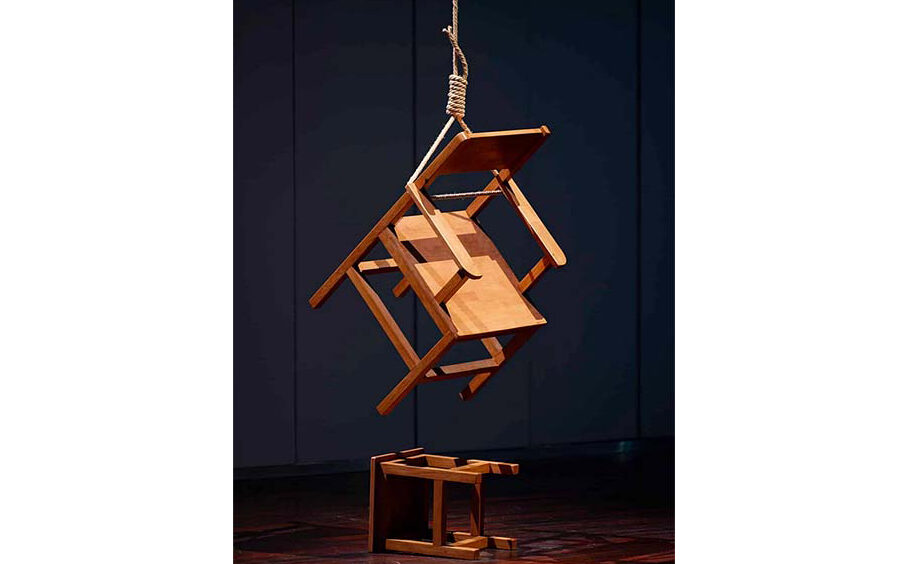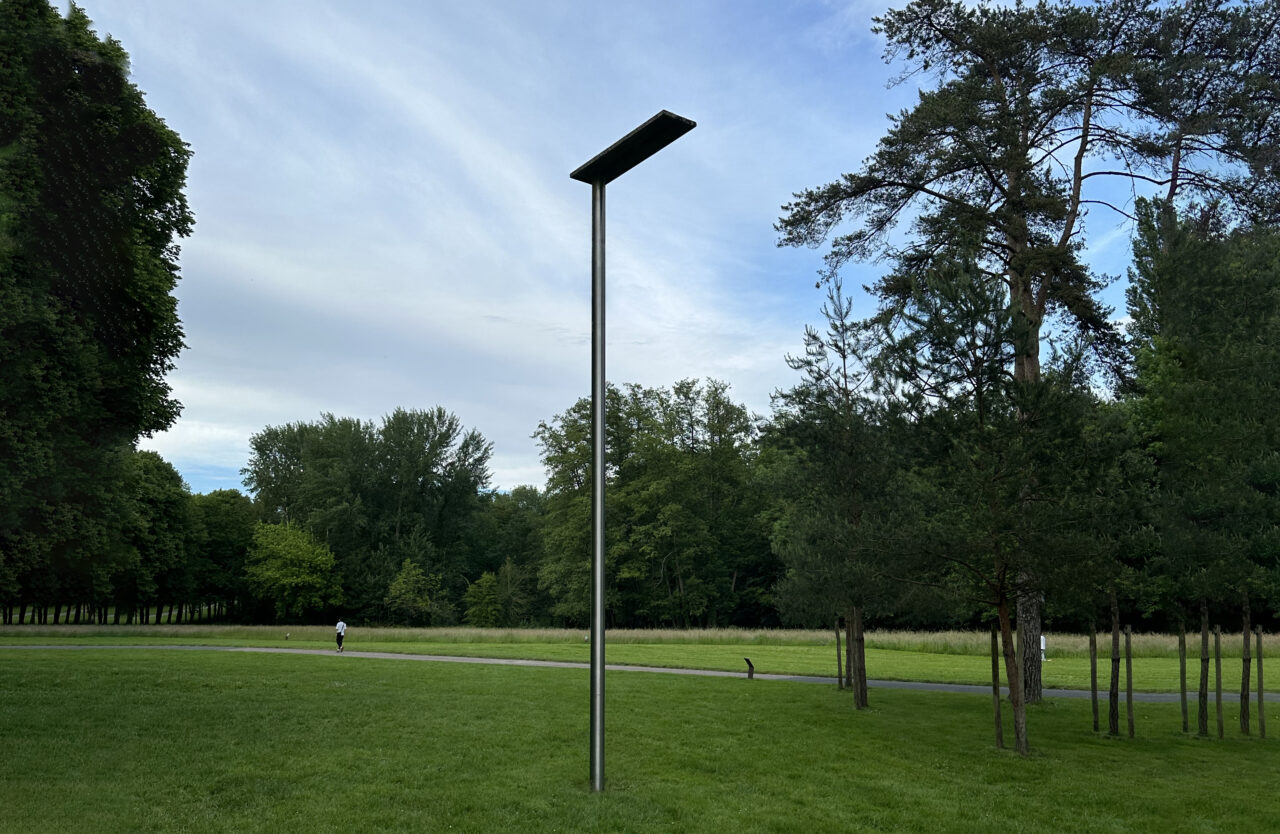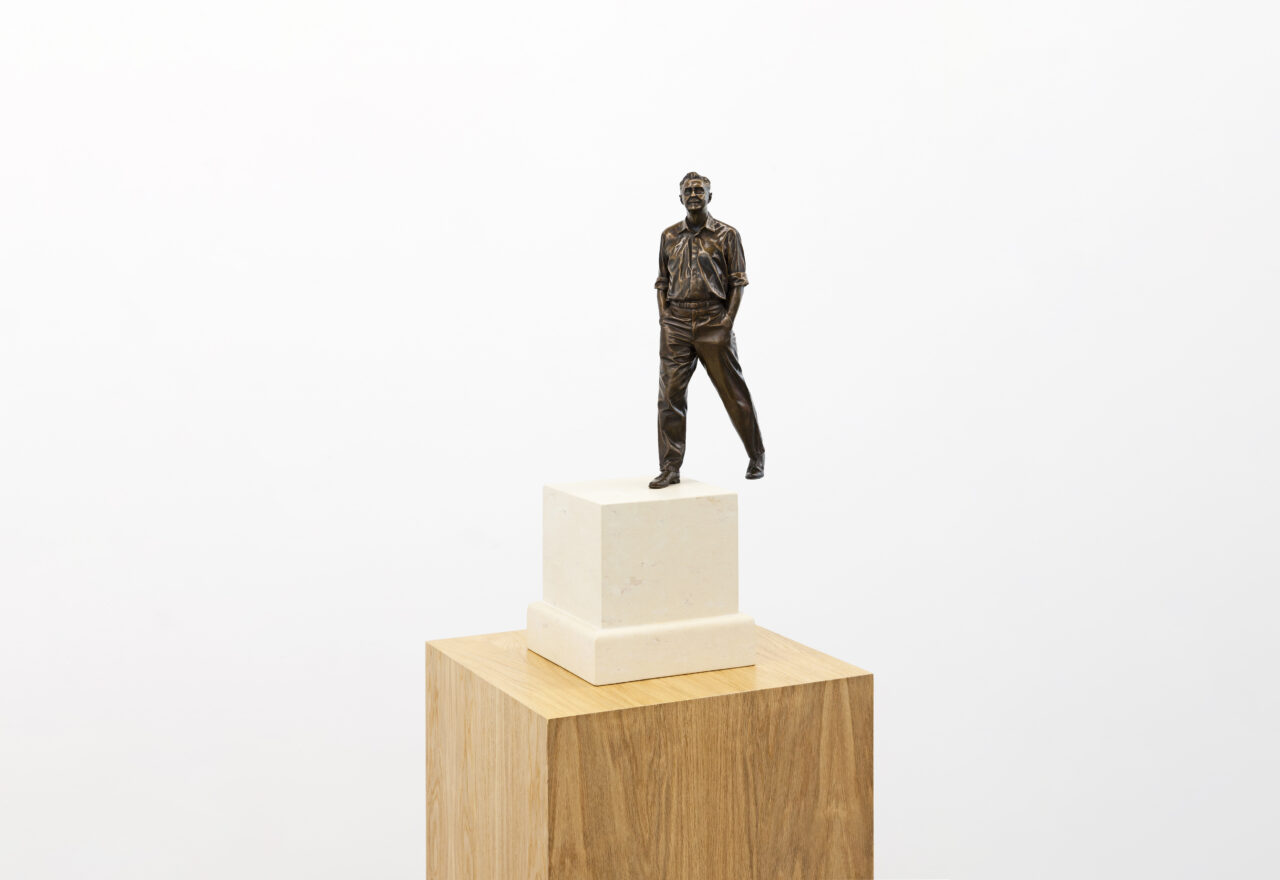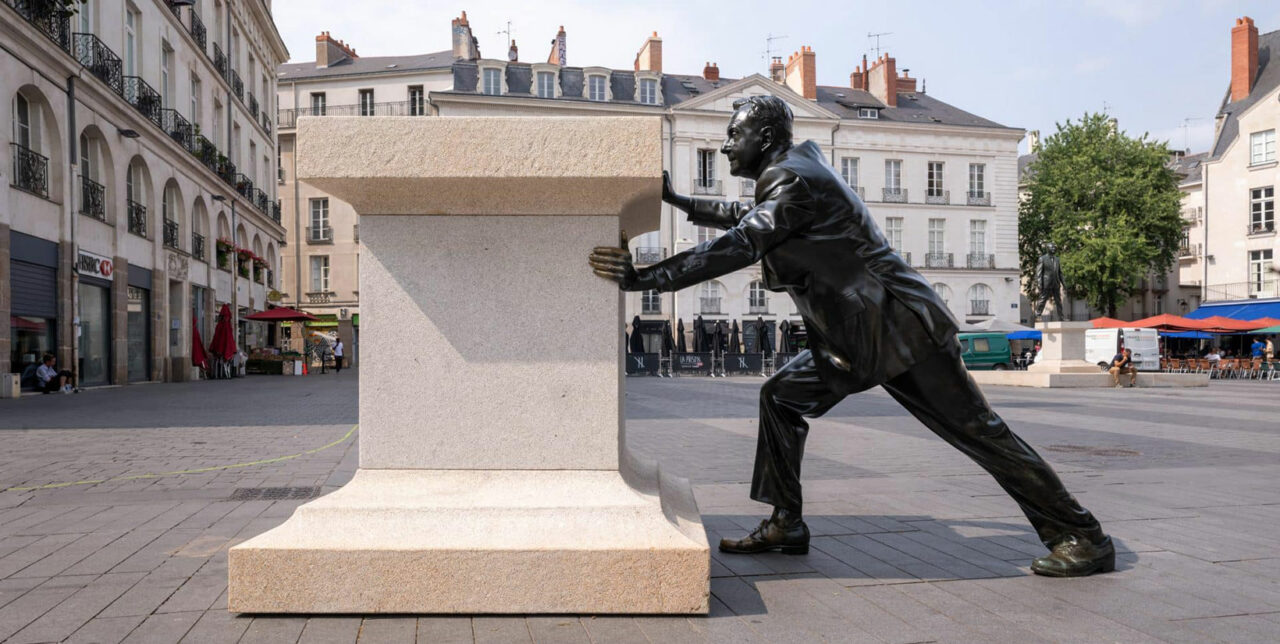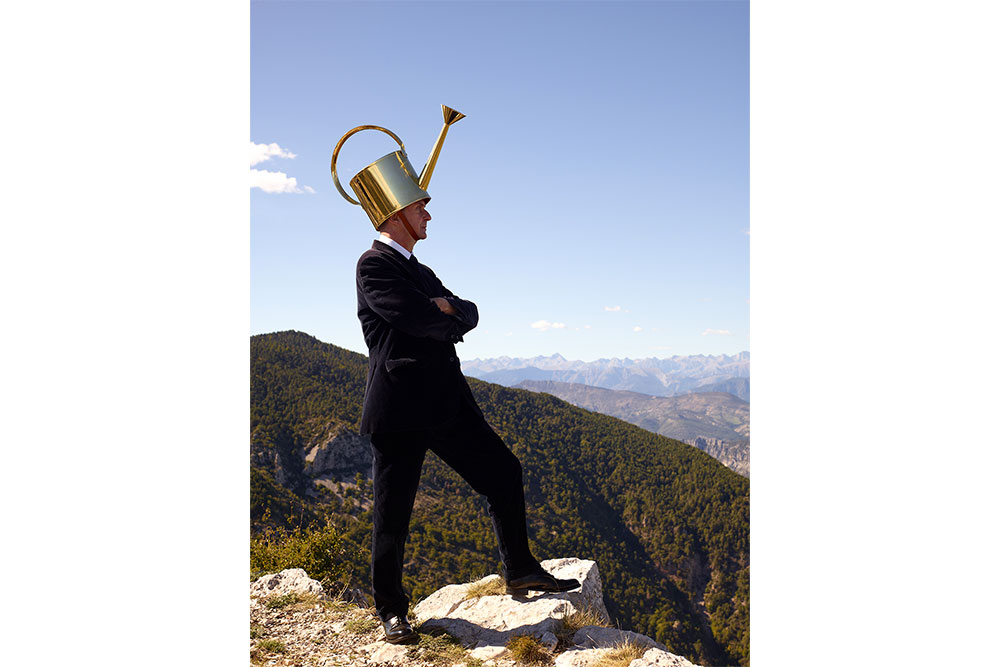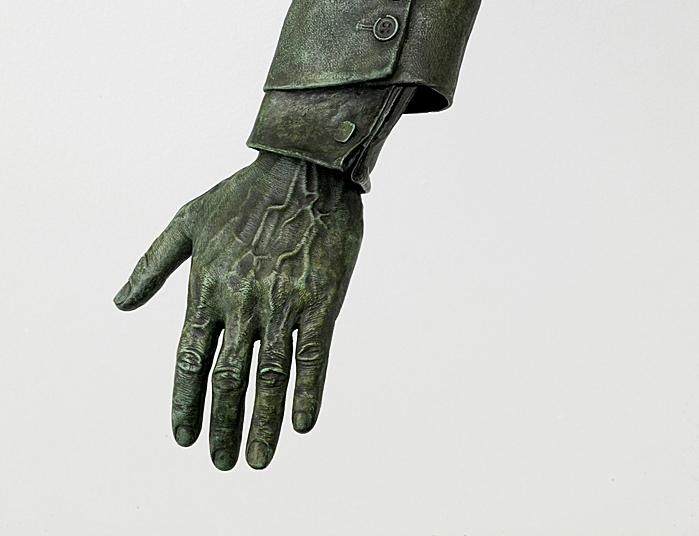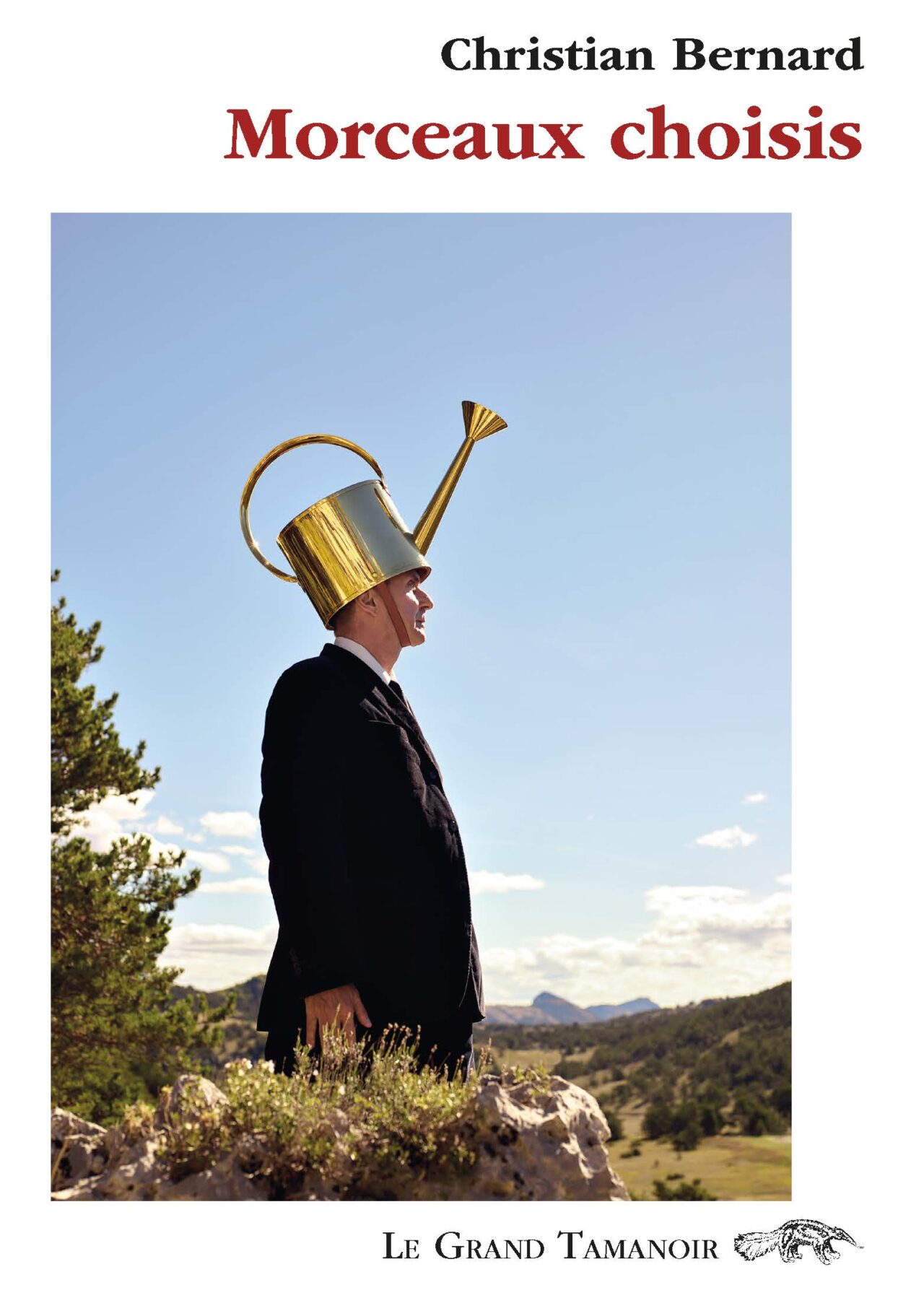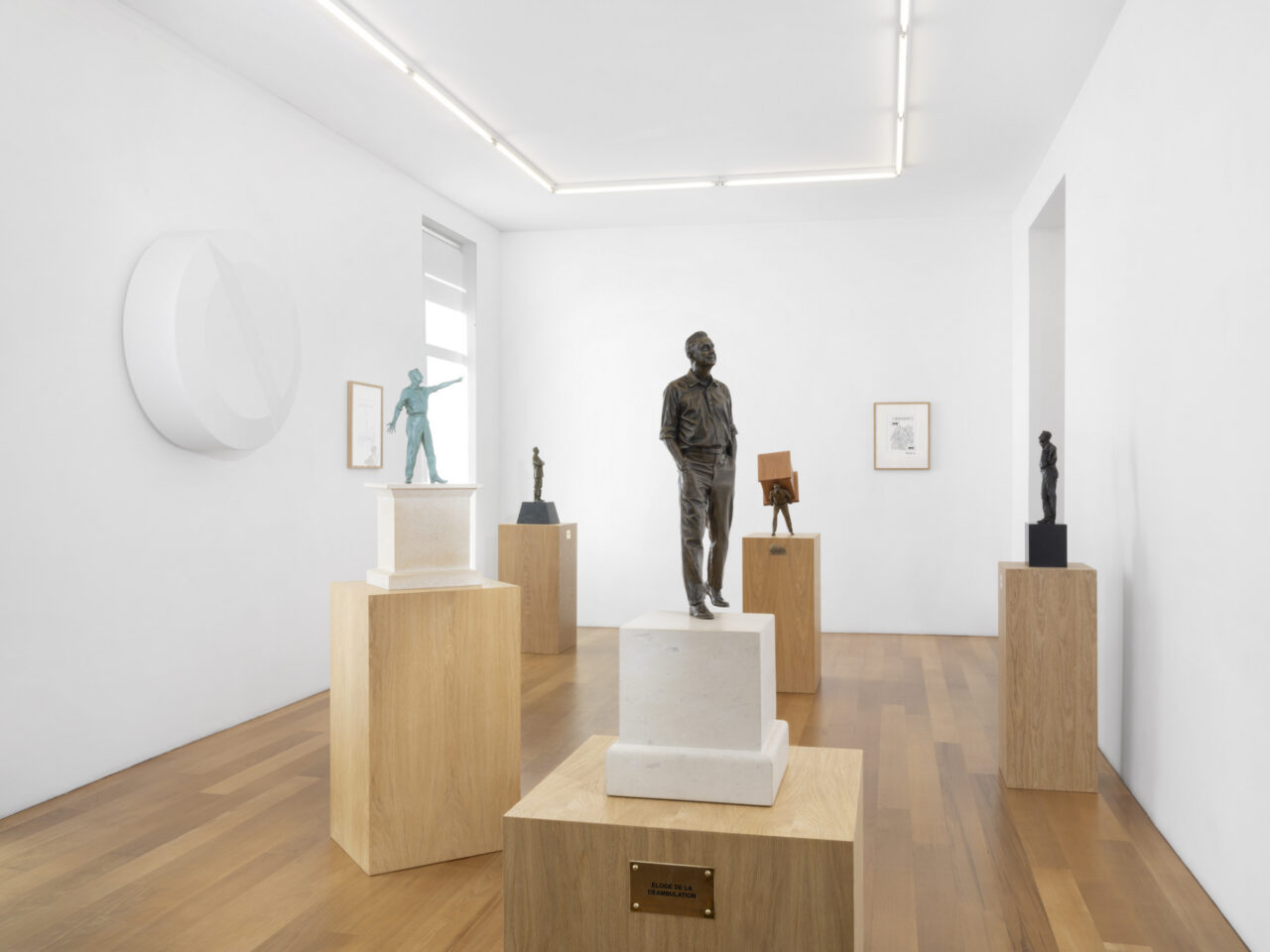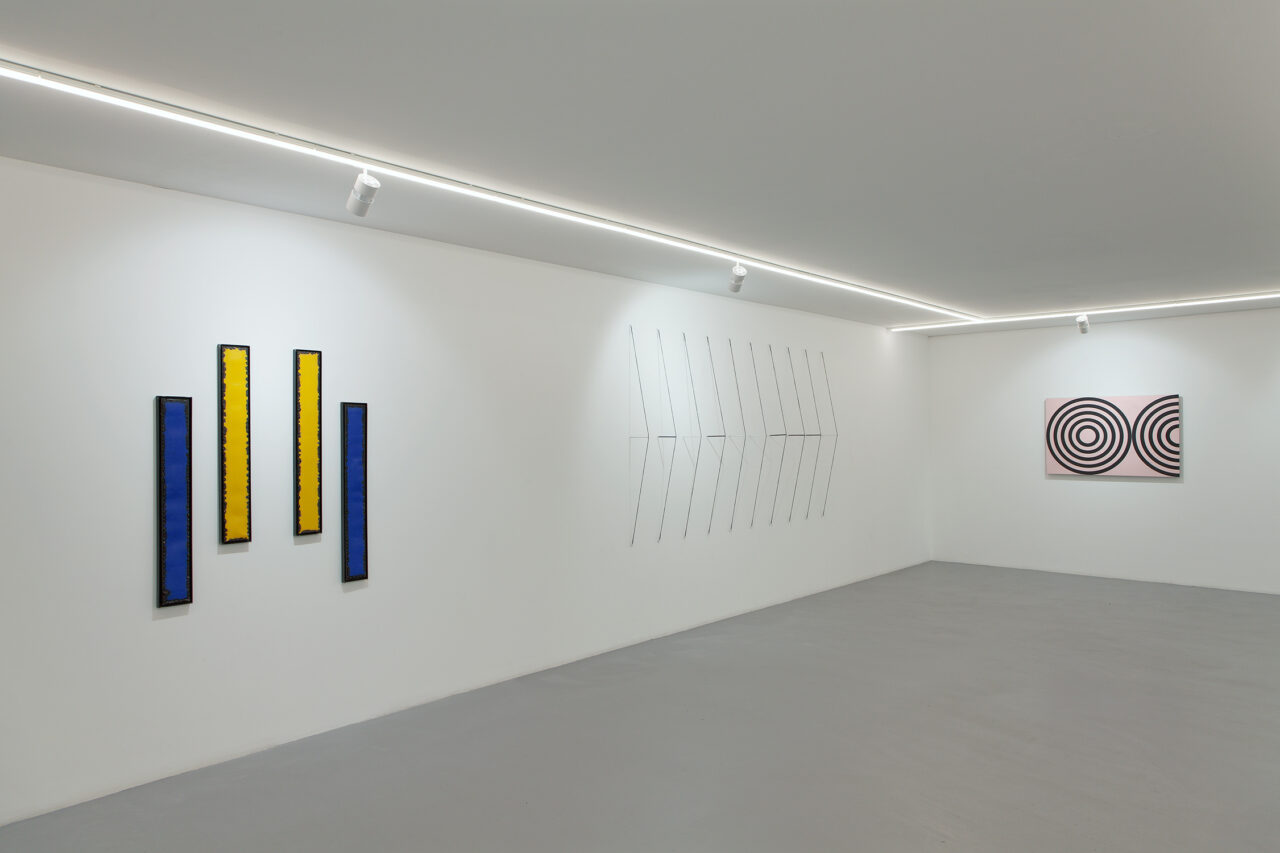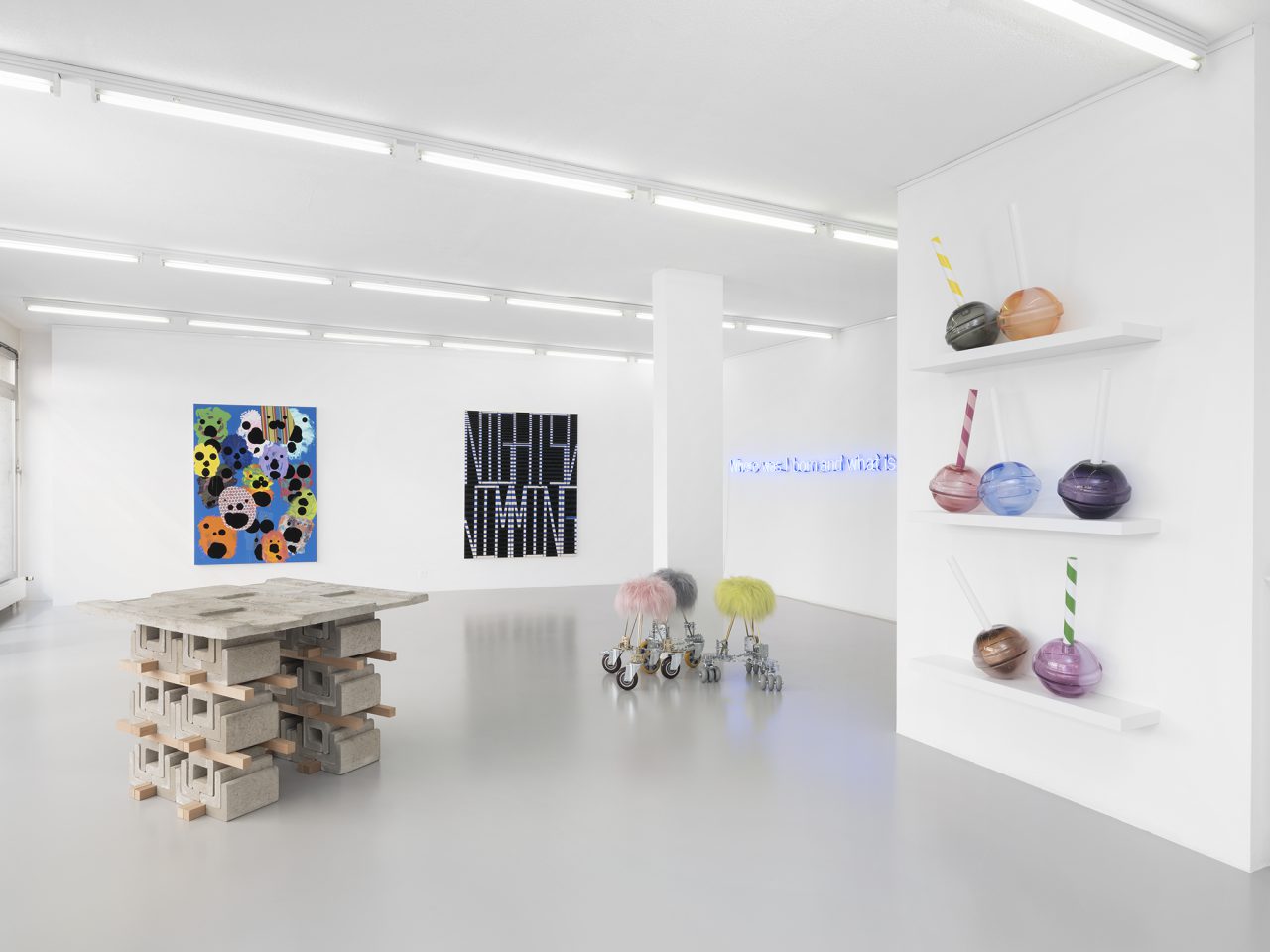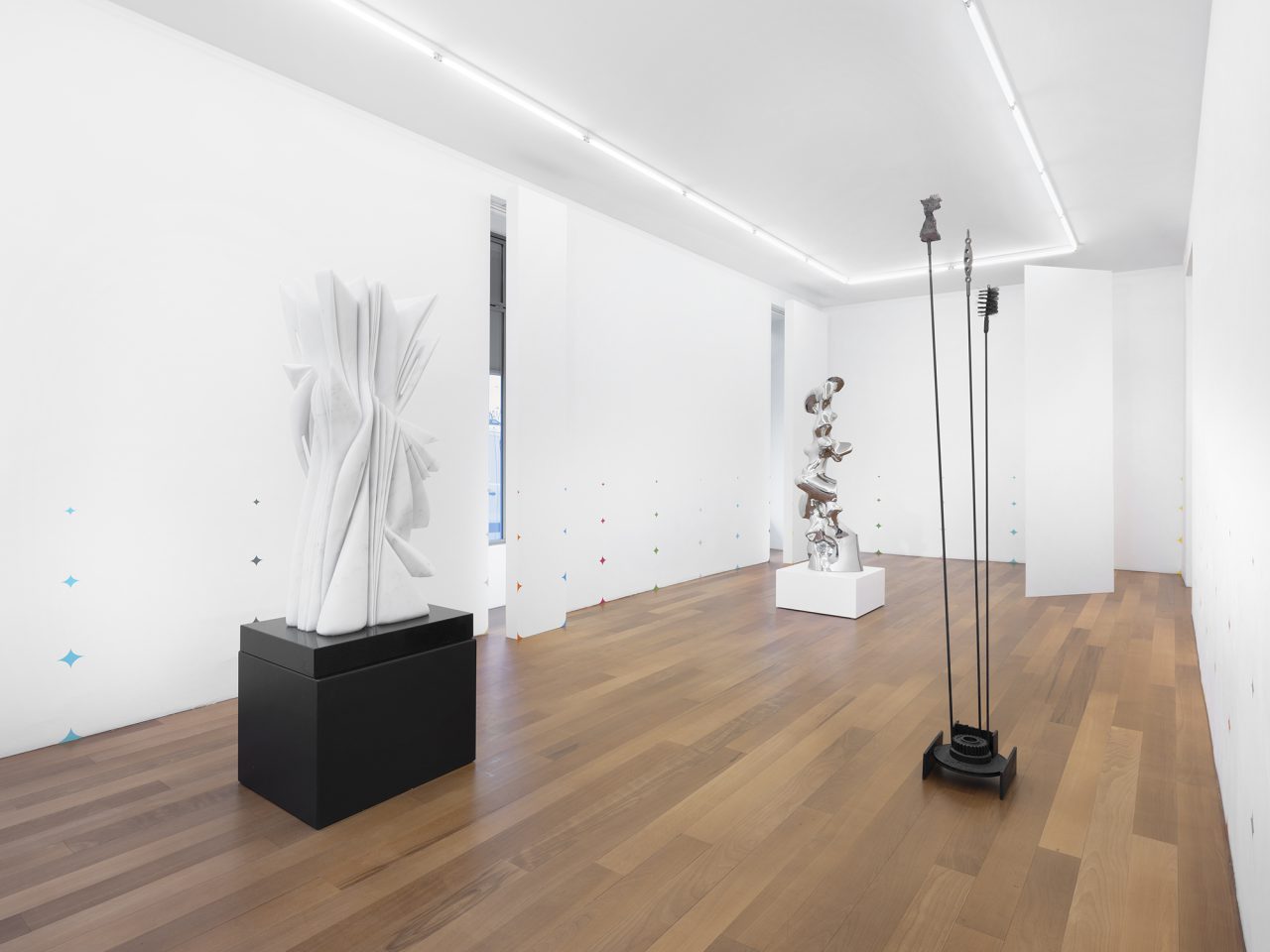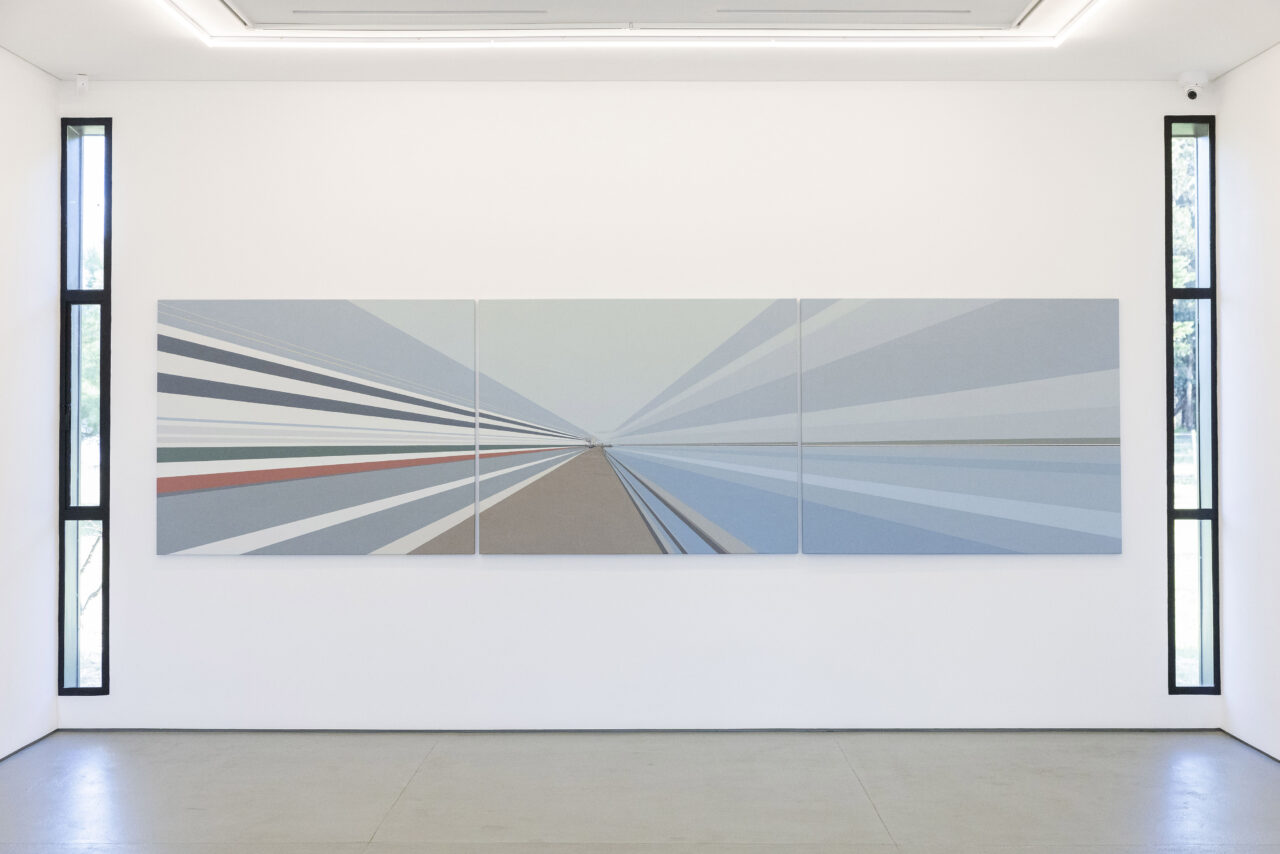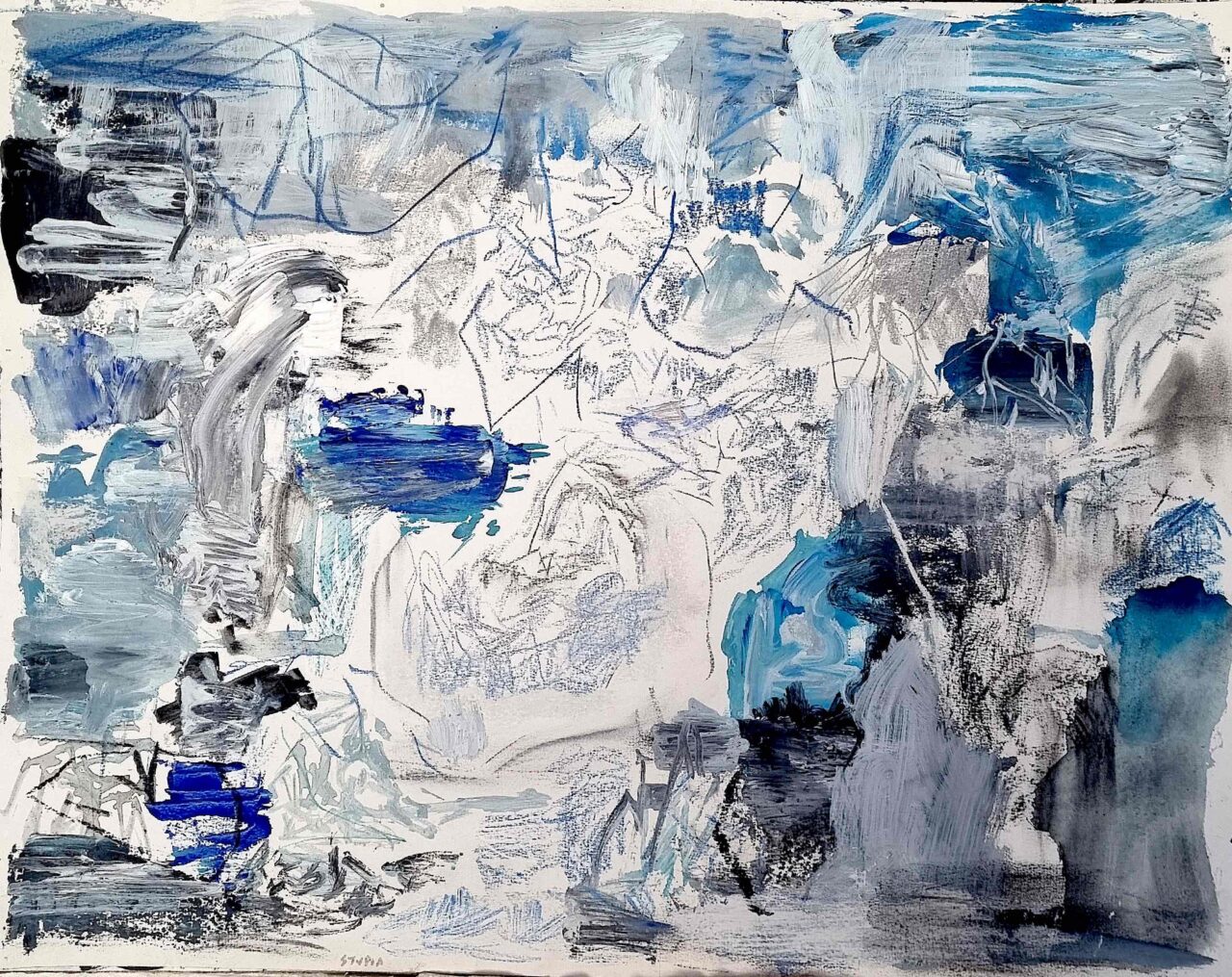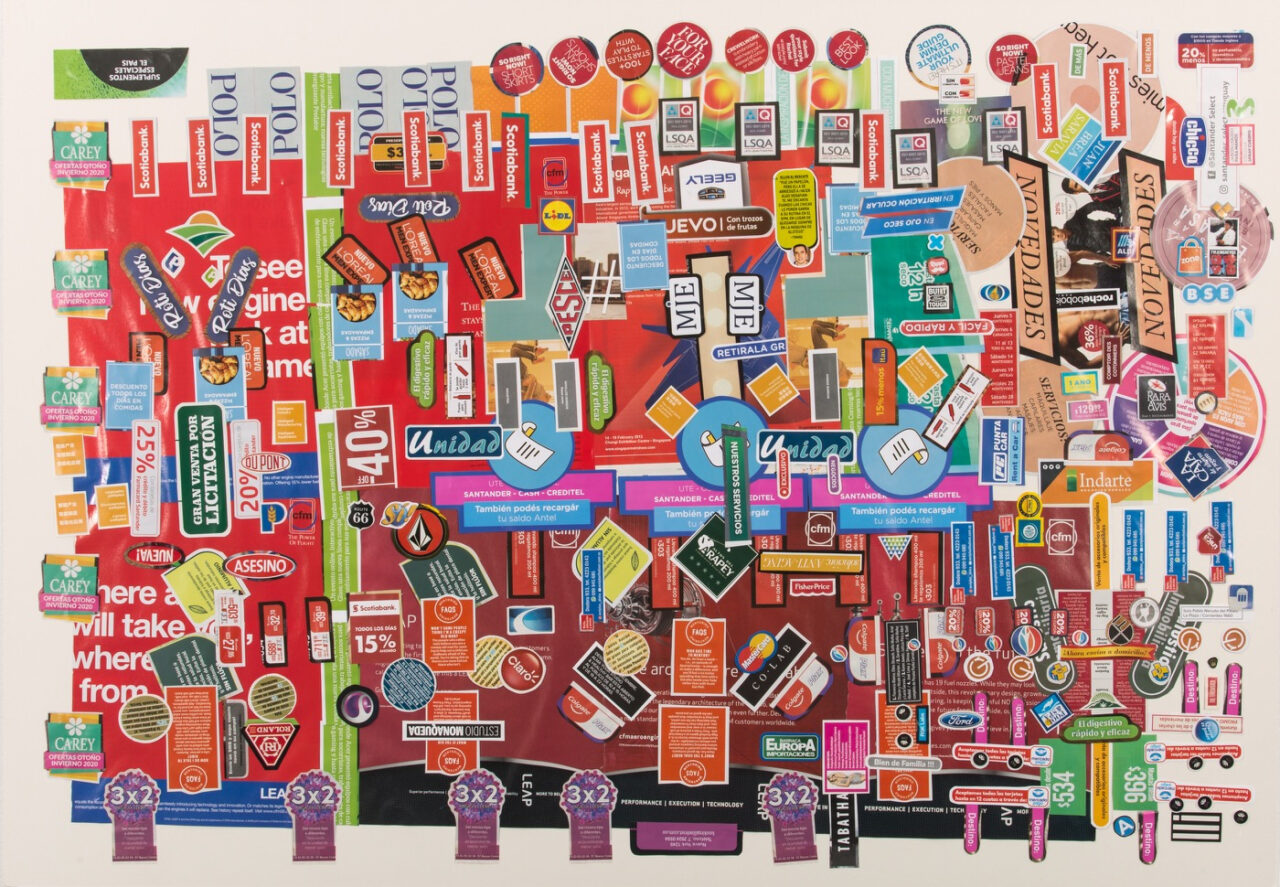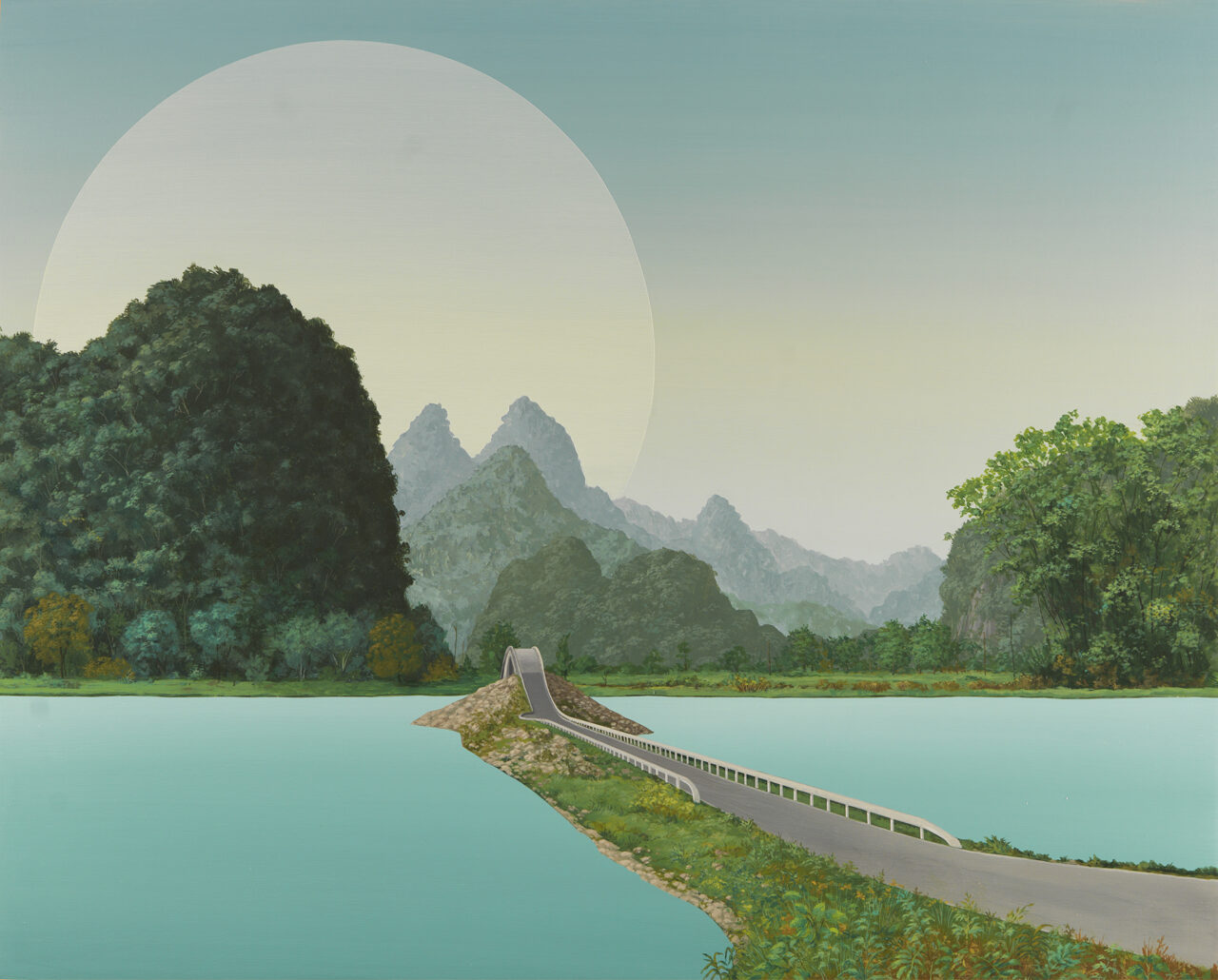Philippe Ramette – Philippe Ramette
Philippe Ramette
Philippe Ramette
20.10.16 → 19.11.16

Explorer of physical and especially mental limitations, inventor of a fantastical and often absurd universe, Philippe Ramette treats his work as “sculpture of reflections” (his term). With a humor that is almost self-derogatory, he sets a scene of audacity and inhibition, daydreaming and fear, illusion and heroisms. Philippe Ramette defines himself as an artist who sees sculpture, photography, and drawing, as possible materializations of the intellectual process.
For his fifth exhibition at the Xippas Gallery in Paris, Philippe Ramette furthers his explorations by questioning the artist’s status in an ensemble of new sculptures produced in 2016.
One of the principal pieces, La sortie des artistes (Stage Exit), stimulates a reflection on the artist’s function, the artist as entrepreneur of a service and product. A platform with a door leading nowhere, the work invites the spectator to physically experience an artist’s path, by obliging him/her to double back. As is often the case for Ramette, the word game and the play between the title and artwork allows for a second interpretation or even a third. Thus deception can be transformed into a ray of optimism.
In the same vein, a hyperrealistic Eloge du pas de côté (In Praise of Side Stepping) precisely reproduces Philippe Ramette’s features and silhouette to offer a detached view of the artist. The artwork invites us to move – to get a little distance and gain a new viewpoint – in order to better return to the starting point. Due to its small size, unheard of for Ramette, this piece references the sculpture “cheminée” all the while pursuing one of Ramette’s most important investigations: the question of the pedestal.
A sculptor first and foremost, Ramette voluntarily infers classical references – most notably in his use of bronze. In this new exhibition, he combines different materials (wood, brass, resin, and bronze) to express his desire not to be trapped in one medium and to also elucidate the creation process.
An artwork unlike any others, devoid of an explicit function, Sans titre provisoire (vanité) (Temporarily Untitled (Vanity)), is a bronze sculpture depicting the in-between: a mold of the artist’s head and a skull. “Vanity, Vain” (“Vanité vaniteuse”), the artwork shows the fluid boundary between the two states of being, where creative energy trumps death.
Philippe Ramette continues this thought process in Ego portable (Movable Ego) where he suggests that the spectator take his place. This cliché of the artist is a reflective mask made from a scan of his face – similarly to many of his earlier artworks such as the Cerveau réfléchissant (Reflecting Brain) (2002).
The physical presence of the artist is even more pronounced in his latest artworks, although they aren’t portraits. Based on the performative aspects of his artworks (where all the objects have a potential use), the artist plays the role of a first-time demonstrator. Potential activity imbues these objects of improbable functions and incites action.
Continuing his play on language and visual constructions, the sculpture Eloge du passage à l’acte (In Praise of Taking Action) is a mold of the artist’s hand with a cut hair in it. The meaning of this piece directly opposes the French expression “have a hair in the hand” (be a lazybones) and thus shatters the symbolism of artwork. With Eloge de la réflexion (In Praise of Thought), Philippe Ramette goes beyond embodying a metaphor and presents a brain that would fly away if not held back by strings.
Through the Espace VIP individuel (Personal VIP Space), the artist distorts the elitist mindset and suggests that “potential users” isolate themselves in a fit of self-celebration. These reflections on the current social context, on the “bling-bling” world, is part of his quasi Kafkaian political approach that is always present in his work. In the same Prothèse à geste (la main tendue) (Gestural Prostheses ‘The Outstretched Hand’) makes a reference to Prothèse à dignité (Dignity Prostheses)/ Prothèse à humilité (Humility Prostheses) (1992), a sort of re-educational device that invites the spectator to extend a hand to another person in a gesture of social openness and to counteract the often gritty humor.
As much in the personal dimension as the political, the world of Philippe Ramette is built on word play and contradictions: seen as absurd, almost naïve, it evokes a reality where everything is finally possible.
Philippe Ramette was born in 1961. He lives and works in Paris.
Several solo exhibitions have been consecrated to his work in France and abroad, most notably at the Centre régional d’art contemporain, Sète, (2016), Espace Malraux, Chambery (2016), Vitrines sur l’art, la Coupole des Galeries Lafayette, Paris (2014), Institut Français, Lasi, Roumania (2014), Fondation Pablo Atchugarry, Punta del Este, Uruguay (2013), and a traveling exhibition in Indian with Alliance Française (2012-2013). In 2017, his work was the subject of a solo exhibition at Parvis, Scène nationale Tarbes Pyrénées, as well as at Entrepôt 9, galerie Barnoud, Dijon.
He has participated in numerous group exhibitions. Currently, Presqu’île #1 the Tanneries-centre d’art contemporain; the inaugural exhibition, Amilly, France (until March 12, 2017); Yes I can, un portrait du pouvoir, Centre d’art contemporain Walter Benjamin, Perpignan, France (until October 16); La French Touch, Artspace Boan 1942, Seoul, South Korea (starting December 7, 2016). Recently, J’aime les panoramas. S’approprier le monde at MuCEM, Marseille, France (2016) and at Musée Rath – Musée d’art et d’histoire, Geneva, Switzerland (2015), Chercher le garçon, MAC/VAL (2015), Egarements at Domaine du Château d’Avignon (2013), Paris/Delhi/Bombay at Centre Georges Pompidou (2011), French Art Today: Marcel Duchamp Prize at Musée national d’art contemporain in Seoul, South Korea (2011).
His artworks are part of museum and private collections at Musée national d’art moderne, centre Georges Pompidou, MAC/VAL, Maison Européenne de la Photograhie, Paris, France, Mamco, Geneva, Switzerland, Musée d’Art Contemporain de Marseille, France, The Israel Museum, Jerusalem, Fonds Régional d’Art Contemporain, France and Fonds National d’Art Contemporain, Paris, France, and many others.
